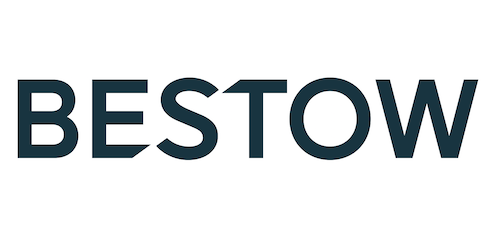If America’s mothers were paid for their work around the home, they would have earned an annual salary of $133,440 over the past year, according to Insure.com’s Mother’s Day Index for 2023. That’s an increase of 5% from the previous Mother’s Day Index, which put mom’s salary at $126,725 – keeping mothers’ wages slightly ahead of inflation.
For 13 years, Insure.com has compiled salary data from the U.S. Bureau of Labor Statistics (BLS) and assigned a value to the unpaid work moms do around the house. Examples of such unpaid work include cooking meals, helping with homework and caregiving. For instance, moms may spend 14 hours a week cooking. Cooks, according to the BLS, make $14.80 an hour. For cooking 14 hours a week for 52 weeks, Insure calculated mom’s annual compensation for being in front of a stove at $10,774. The editors then added those salaries together to come up with an annual figure mothers would earn if they were compensated for all the jobs they perform. The Mother’s Day Index is intended to acknowledge the work mothers do, which for many includes balancing a family and a home with a full-time job — doing two jobs but only being financially compensated for one.
The increasing value of mom’s unpaid labor
The editors this year used the same 19 job categories that were the basis for last year’s index – which, granted, is by no means an exhaustive list. However, earnings have increased for almost all tasks, including:
In two cases, however, pay actually stayed stagnant or declined. They were:
- Private detectives and investigators: down 3%
- Mental health counselors: same salary as last year
If mothers were paid what they are truly worth, their salary of $133,440 would be nearly double what most U.S. workers earn. The real median income in the U.S. is $70,784, according to the latest figures from the U.S. Census Bureau.
| Profession | 2022 annual earnings | Hours per week | Weeks per year | Mean hourly wage | 2023 annual earnings | Change from 2022 |
|---|---|---|---|---|---|---|
| Accountants and auditors | $1,050 | 0.5 | 52 | $41.70 | $1,084 | 3% |
| Baker | $373 | 3 | 8 | $16.41 | $394 | 6% |
| Chauffeurs and shuttle drivers | $7,329 | 9 | 52 | $16.83 | $7,876 | 7% |
| Childcare worker | $27,685 | 40 | 52 | $14.22 | $29,578 | 7% |
| Cook | $9,835 | 14 | 52 | $14.80 | $10,774 | 10% |
| Elementary school teacher* | $23,220 | 20 | 36 | $32.69 | $23,537 | 1% |
| Hairdressers, hairstylists, and cosmetologists | $450 | 0.5 | 52 | $18.71 | $486 | 8% |
| Judge, magistrates & other judicial workers | $10,278 | 3 | 50 | $73.90 | $11,085 | 8% |
| Landscaping and groundskeeping workers | $881 | 1 | 52 | $17.92 | $932 | 6% |
| Laundry workers | $2,676 | 4 | 50 | $14.26 | $2,852 | 7% |
| Licensed practical and licensed vocational nurses | $598 | 2 | 12 | $26.86 | $645 | 8% |
| Maids and housekeeping cleaners | $7,394 | 10 | 52 | $15.35 | $7,982 | 8% |
| Meeting & convention planners | $1,780 | 8 | 8 | $28.24 | $1,807 | 2% |
| Mental health counselor | $4,782 | 5 | 40 | $23.93 | $4,786 | 0% |
| Community and social service specialists | $11,654 | 40 | 12 | $24.82 | $11,914 | 2% |
| Other designers | $1,413 | 5 | 8 | $36.75 | $1,470 | 4% |
| Other teachers and instructors | $11,960 | 10 | 40 | $31.94 | $12,776 | 7% |
| Personal care aides | $2,195 | 3 | 52 | $14.87 | $2,320 | 6% |
| Private detectives and investigators | $1,172 | 5 | 8 | $28.56 | $1,142 | -3% |
| TOTAL | $126,725 | 183 | 688 | $133,440 | 5% |
*Additional job during COVID-19 pandemic
*Some professions might not perfectly match last year’s description due to editors updated selection of job titles.
What is changing – and what isn’t – for mothers
Financial equality is improving significantly for working mothers and women in general. A recent report from the Pew Research Center found that in a growing share of heterosexual marriages, husbands and wives now earn about the same.
In nearly one-third of those marriages — 29% — spouses earn roughly the same amount of money. Moreover, in the past five decades, the percentage of wives who earn as much as or more than their husbands has about tripled.
Still, in more than half of all marriages — 55% — men are the sole or primary source of income. Just 16% of households contain a wife who is the primary or sole breadwinner.
And when it comes to household chores and caregiving, women continue to pick up a heavier share of the responsibilities, Pew says.
Mothers and life insurance
Whether a mother works outside the home or not, losing a primary caregiver is emotionally and financially devastating, which is why all mothers should consider purchasing life insurance.
This is especially true for single-mother households. Yet, according to the life insurance industry research group LIMRA, only about 40% of single mothers have life insurance, which is 11 points below the general population rate.
“There are many barriers to life insurance purchase. Single mothers are busy and have a lot of financial concerns,” says Alison Salka, Ph.D., senior vice president and research director at LIMRA.
“Four in 10 mothers say they don’t own life insurance because it is too expensive, yet two-thirds overestimate the cost. The majority of mothers also feel they don’t know enough about life insurance. According to the 2023 Insurance Barometer Study, only a third of mothers feel very knowledgeable about life insurance,” Salka says. The Insurance Barometer Study, an annual look at the perceptions, attitudes, and behaviors of insurance consumers, is produced by LIMRA and Life Happens, an industry non-profit.
A life insurance policy could enable the family to hire a nanny or pay for childcare services to help fill the role that mom used to play.
“The average annual cost of childcare is almost $15,000,” Salka says. (For more insights from Dr. Salka on mothers and the importance of life insurance, click here.)
And if mom is no longer around to help with the homework, life insurance could help pay for the cost of a tutor. Life insurance can also fund the cost of hiring a housekeeping service.
No one wants to think about the possibility of dying prematurely or unexpectedly, but by creating a plan ahead of time, insurance can protect families from financial disaster if the worst should occur.
Finding the right life insurance policy
You should start shopping for life insurance as soon as you realize you need it.
“Premium costs only get higher as we age, so locking in a low premium earlier will allow you to have a life insurance policy for less when you do have children — and the expenses that come with them,” says Michelle Buswell, Senior Vice President and COO at Legal & General America.
Fortunately, finding the right life insurance coverage can be a seamless process — and we’re here to help. You can use our search tool to input your ZIP code and date of birth so that you can compare quotes from multiple providers.
We also have reviewed and ranked the best life insurance companies of 2023 so you can figure out which insurer is best for your specific needs.
Not sure where to start? Figure out how much life insurance you need.
More ways to protect your family
Life insurance isn’t the only way to provide for your family if you die prematurely. It’s also important to have an estate plan in place that spells out exactly how your assets will be divided and who will receive them.
At minimum, an estate plan should include a will. But it’s also wise to sit down with a financial professional, such as a certified financial planner or an estate attorney, to discuss the best ways to protect the financial health of your family.
Talking about life insurance probably isn’t how you planned to celebrate Mother’s Day. But making end-of-life plans and setting up adequate financial protection is the best gift you can give your family.
“In general, the younger a policyholder is, the less expensive insurance is. There really isn’t a bad time to buy life insurance,” Salka says. “The best time is when you have people you want to protect and take care of. For mothers, that is every day.”
Methodology
Mean hourly wages are based on current occupational wage data provided by the Bureau of Labor Statistics. It does not include income from work performed outside the home. The annual wage and percentages are rounded to the nearest whole number. Sums may add up to more than 100. The editors determine the hours and weeks each occupation is performed based on their research and the values assigned to those tasks in past indexes.













Alison Salka
Ph.D., Senior Vice President and Research Director at LIMRA“Four in 10 mothers say they don’t own life insurance because it is too expensive, yet two-thirds overestimate the cost.”